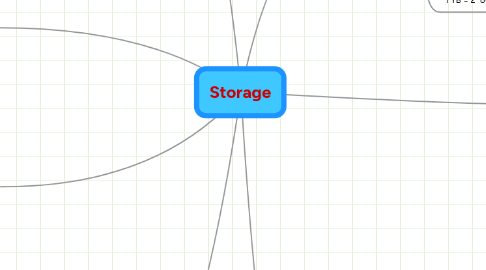
1. Flash Memory Storage
1.1. SSD Solid state drives
1.1.1. SSD have several advantages over magnetic hard disk
1.1.1.1. Faster access time
1.1.1.2. Faster transfer rates
1.1.1.3. Generate less heat
1.1.1.4. Consume less power
1.1.1.5. Last longer
1.2. Flash memory chips
1.2.1. Memory crad
1.2.1.1. Compact Flash (CF)
1.2.1.2. Secure Digital(SD)
1.2.1.3. Secure Digital High Capacity(SDHC)
1.2.1.4. MicroSD
1.2.1.5. MicroSDHC
1.2.1.6. xD Picture Card
1.2.1.7. Memory Stick
1.2.1.8. Memory Stick Micro(M2)
1.2.2. USB Flash drives plug into a USB port on a computer or mobile device
1.2.3. Express Card module (PCMCIA)
2. Cloud Storage
2.1. Cloud storage is an internet service that provides storage to computer users
3. Optical Disc
3.1. Optical disc commonly store items in a single track that spirals from the center of the disc to the edge
3.2. CD
3.3. Blu-ray Disc
3.4. DVD
4. Other Types of Storage
4.1. Tape
4.2. Magnetic stripe cards and smart cards
4.3. Microfilm and microfiche
4.4. Enterprise storage
5. Capacity
5.1. 1 KB = 2^10 Bytes
5.2. 1 MB = 2^20 Bytes
5.3. 1 GB = 2^30 Bytes
5.4. 1 TB = 2^40 Bytes
5.5. 1 PB = 2^50 Bytes
5.6. 1 EB = 2^60 Bytes
5.7. 1 ZB = 2^70 Bytes
5.8. 1 YB = 2^80 Bytes
6. Access time measures
6.1. The amount of time it takes a storage device to locate an item on a storage medium
6.2. The time required to deliver an item from memory to the processer
7. Hard disks
7.1. Characteristics of a hard disk include
7.1.1. Capacity
7.1.2. Platters
7.1.3. Read/Write Heads
7.1.3.1. The hard disk arms move the read/write head, which reads items and writes item in the drive
7.1.4. Cylinders
7.1.5. Sectors and Tracks
7.1.6. Revolutions per Minute
7.1.7. Tranfer Rate
7.1.8. Access Time
7.2. Formatting
7.2.1. Formatting is the process of dividing the disk into tracks and sectors so that the operating system can store and locate data and information on the disk
7.3. Raid
7.3.1. RAID is a group of 2 or more integrated hard disks
7.4. Interface
7.4.1. SATA
7.4.2. IDE
7.4.3. SCSI
7.4.4. SAS
